Clove feathery - beautiful, hardy and undemanding perennial. For the bright color of flowers, compact bushes and the ability to grow in one place for several years, I fell in love with the professionals and flower-lovers. Clove feathery on the photo looks no less impressive than live.
Description clove feathery
The grassy plant of the Carnish perennial reaches 30-40 cm in height. Stems upright, leaves linear, stems, flowers are collected on pairs in umbrella inflorescences. Motherland consider Eastern Europe, Central and South Russia. In European countries, the carnation was taken back in the distant XI century. Thanks to the enormous successes of breeders, we can see a wide variety of varieties of this wonderful plant.
Like the majority of perennials, the permaid carnation in the first year after landing can please only with powerful stems and only in the second year - blossom, which begins in June and lasts 1 month. Multiplied by seeds, dividing bush and stalling.
Optimal conditions for growing Carnist Carnation
Landing Conducting Carnation and further care for it do not require "obsessions". Consider on the items, which conditions are optimal for its growth and flowering:
- The soil. The best option is thin and sandy soils containing sand (silicon source), without which the stalks will be brittle.
- Lighting. Light-loving plant. The best place for landing is sunny sections with a half-day in the afternoon.
- Air temperature. Resistant plant. In the summer, even anomalous heat is withstanding, but in winter needs additional shelter.
- Watering. Regular, moderate. It is important that the water is not stood on a plot with a period of carnation.
- Fertilizer. During the landing or in the spring, organic fertilizer is used - humus.
The reproduction of the periodist carnation
Like most garden plants, the Carnish carnation is multiplied by several ways: stalling, dividing the bush and seed. You can choose any of their three ways and start creating an individual "clove" story on its site.
- Shining. The best time is summer (mid-June - early July). Material - the tops of adult plants or side shoots (without color kidneys). Sequence of work: cut several cuttings, each 10-15 cm long; Make a thin incision on the stalk slightly below the leaf node, remove the lower leaves, and leave the tops; cuttings immediately plant in small pots or peat cups with Earth (enriched universal substrate); After a couple of weeks, the cuttings are rooted, and you can transplant them to a permanent place of growth.
- Decision bush. The optimal time is spring (before the start of active growth) or the end of summer (after the end of active growth). The adult plant digs and separate the part of the rhizomes (acute item or hands). After division, the received bushes are planted at a permanent place of growth.
- Seed method of breeding. When sow: in March to seedlings, in May - in open ground. Carnish seeds are seed in loose, well-wet soil. To obtain seedlings, the seeds are sown in a small box, they watered well and covered with glass. Keep the box in a bright place at a temperature of 15-18 degrees. After the first shoots appear, the glass is removed, and a month later, the seedlings are dive and planted in an open ground. In mid-May, seeds are sown to a permanent place of growth. Make it in the morning or in the evening according to a simple scheme: we water the earth, snatch over the seeds and sprinkle with a small layer of soil. With moderate watering and high air temperature, shoots appear on 5-6 days.
All methods are very simple and do not require much time, funds and physical health. Unpretentious, but very bright and fragrant Carnish Carnish, the cultivation of her around the house will not even be in tie to young schoolchildren.
Diseases, Carnist Carnation Pest
Who can boast a strong immunity against diseases and pests, so it is Carnish Carnation. It does not provide prevention against negative impact from viruses, fungi and insects. But there are exceptions. The most common problems of the cement cloves:
- Fusariosis is a fungal disease that affects all the plant. It may provoke it (which makes) an excess of moisture from the rhizomes. Symptoms: Stems at the root itself are hung up, and then they are laid out, the leaves are yellow and twisted. Treatment should be carried out only by fungicides with an interval 1 time per month.
- Rust - Another disease is the result of the mooring of the soil. Symptoms: Brown swollen on the leaves, dying plants. Prevention: extractive feeding of 0.5% Selutyra. Treatment: processing of fungicides.
- Insects: Medveda, Underflows, web tick. They damage roots, stems and flowers. Methods of struggle:
- medveda. In the fall, dug a small hole, pour a little manure there and cover the film. Pests will slip there on the wintering. By the spring, discover the pit and destroy the pool. If there is no time to wait, use the solution of the household soap against them against them, which should be poured in their mink;
- underflows. They also can also put traps from wet grass, in which they are hiding from the summer heat. Act on the same plan as in the first case;
- cute tick. Methods of struggle: The treatment of affected plants by the drug "Axet", Nasty onion husk, tobacco or garlic (10 g per 5 liters of water).
Carnish Carnation varieties. The best hybrids and their features
As a result of the crossing of the Carnish Carnish with the Carnation of Sadovaya, we have the opportunity to grow many interesting varieties on their flower beds. Most Popular:
- Hybrid carnation (group of varieties). Height - no more than 30 cm, flowering - June, July. Common varieties: Love Breath, Doris, Spring Beauty.
- Sonata. Sorting, plants height - 30-40 cm, bloom - from June to August, color - from white to dark burgundy.
- Pleiad. Sortish, plants height - up to 40 cm, flowering - June-July, color - from white to dark red. This Carnish Machrower Carnation, Flowers, Lush and Massive.
Carnish Carnish in Landscape Design
Such a "convenient" plant in all values \u200b\u200bof the plant, like a garden Carnish carnation, takes one of the first places in the perennial rank for the perfect garden. She can decorate anything: flowerbed, Rabata, Alpinarium. Because of the lush stems, the carnation is a filament of gardeners as a soil plant for creating thick pillows and green rugs. The perennial Carnish Carnation creates a terry carpet that perfectly complements or replace the lawn at sunny areas. In the composition with coniferous shrubs and spike roses, these flowers create a warm, cozy atmosphere in the garden.
In addition to the fabulous beauty of the carnation has a practical purpose: its strong roots greatly strengthen the soil. Credit cloves are planting on slopes, loose slopes or at the edges of flower beds with fresh land.
Conclusion
Bright, fragrant flowers - Carnish Carnation, allow you to create in the garden incredibly beautiful and spectacular compositions that will decorate your garden over the years. Who knows, maybe with proper care, you will make a family photo with grandchildren against the background of their terry multicolored rug.

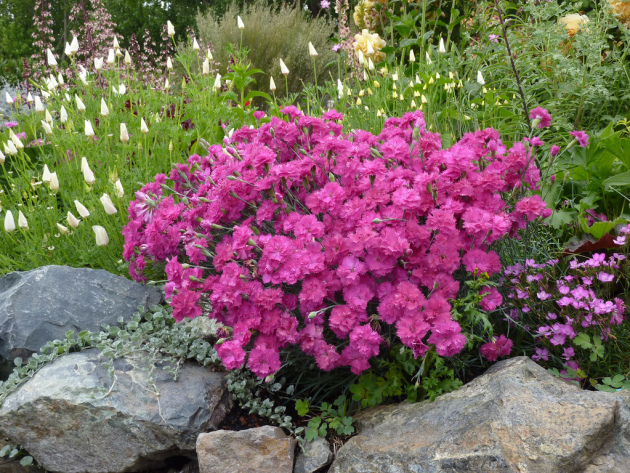


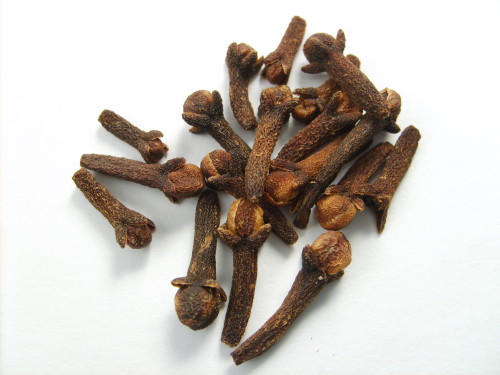
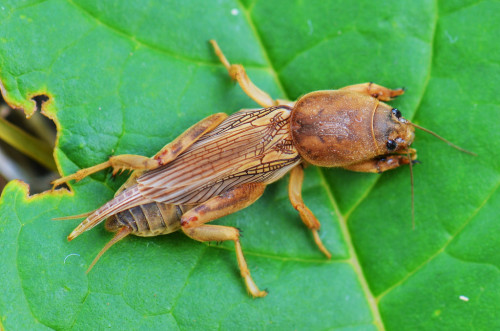
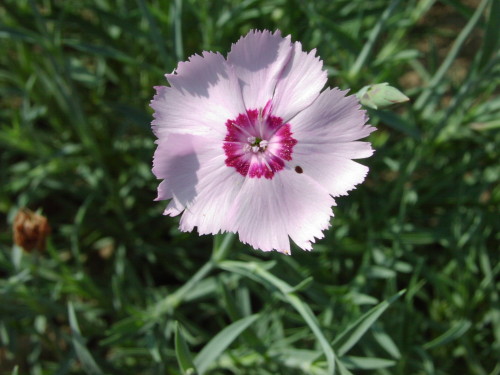
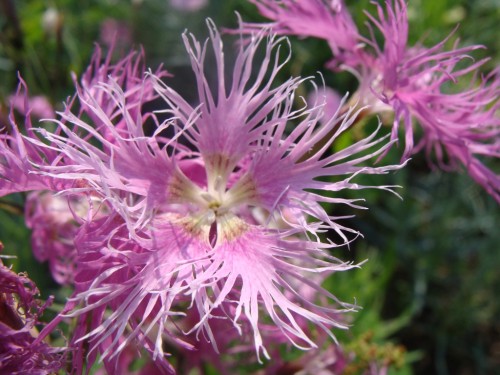
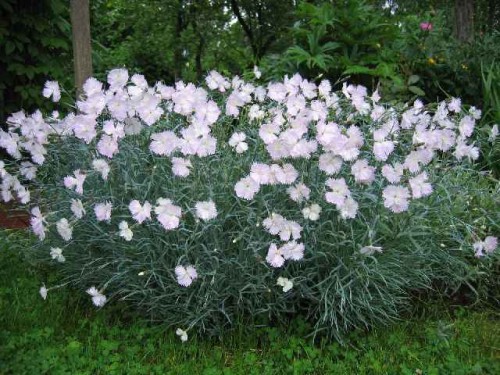
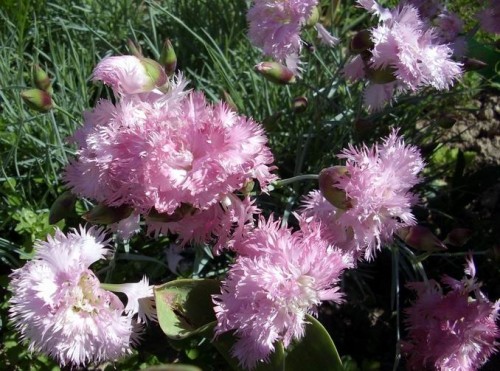
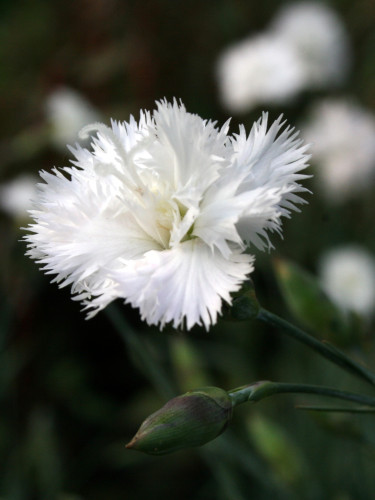
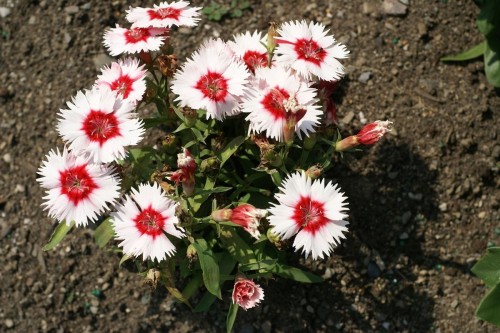
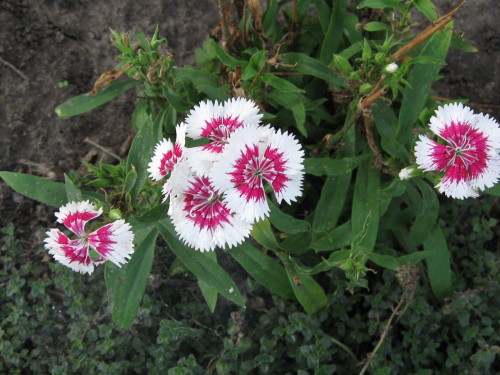
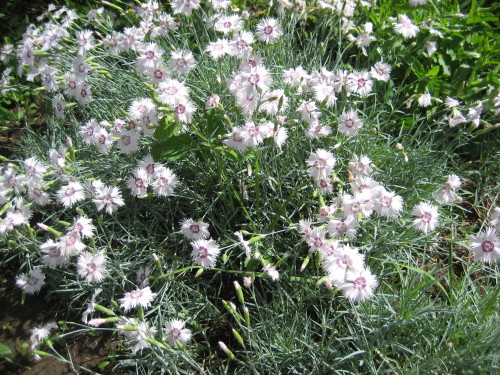
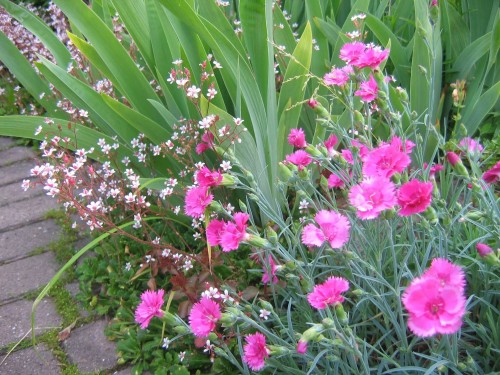
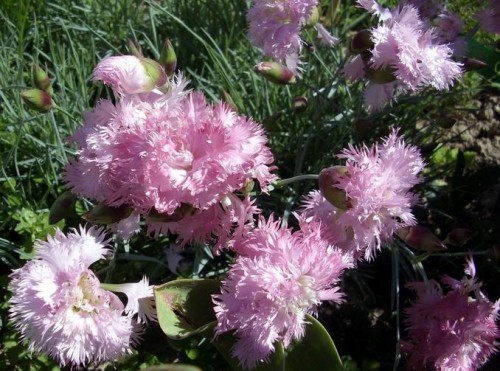












 Start a discussion ...
Start a discussion ...